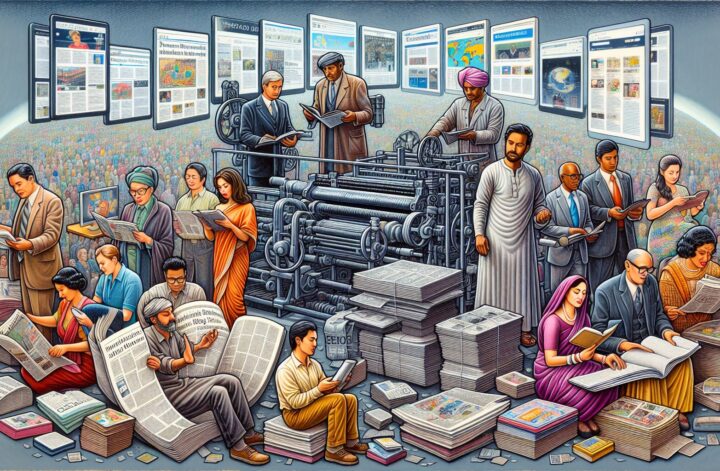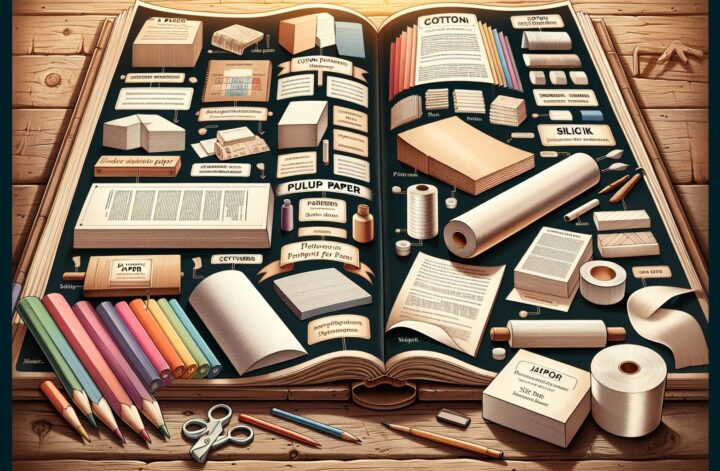Introduction:
In our increasingly digital world, the value of printed materials should not be overlooked. From business cards to brochures and books, the print industry continues to play a vital role in communication and marketing strategies. However, the range of materials available for printing has expanded significantly, bringing tremendous versatility and quality to the craft. In this article, we will explore the various types of printing materials, their applications, and how they contribute to enhancing communication. Join us on this journey where art, technology, and innovation converge!
The World of Printing Materials
Printing materials have evolved far beyond the simple paper and ink combination. Today, printers can reproduce images, graphics, and text on a wide variety of surfaces, giving birth to unique and impactful marketing collateral. Let’s delve into some of the materials that have revolutionized the printing industry:
1. Paper: The Classic Choice
Paper remains the go-to choice for most printed materials. With its wide range of weights, finishes, and colors, paper offers endless possibilities. From uncoated stocks that provide a tactile and organic feel to glossy paper ideal for vibrant images, the choice of paper can greatly impact the printed piece’s overall aesthetic and effectiveness.
2. Cardstock: Sturdy and Impactful
For business cards, postcards, and invitations, cardstock is the material of choice. Its heavyweight and sturdy nature allow for durability while offering a premium look and feel. Cardstock is available in different thicknesses, enabling endless customization options and exuding professionalism.
3. Synthetic Materials: Weatherproof and Durable
In specific situations where durability and water resistance are paramount, synthetic materials step into the spotlight. Polyester, vinyl, and polypropylene are some examples of synthetic options that provide excellent tear resistance and can withstand harsh conditions, making them suitable for outdoor signage, banners, and menus.
4. Fabric: Texture meets Elegance
When it comes to printing materials, fabric presents an exciting option. Whether it’s cotton, silk, or canvas, fabric can elevate printed pieces to new levels of sophistication. Fabric banners, flags, and backdrops not only capture attention but also add a touch of elegance that other materials may lack.
5. Metal: Shining and Durable
Metal materials have gained popularity in recent years, lending a modern and sleek appearance to various printing applications. Aluminum and stainless steel are often used for signage, plaques, and labels, becoming a visual representation of the fusion between art and industrial elements. The reflective nature of metal creates a distinct and eye-catching effect.
6. Wood: Organic Charm
For a rustic and natural appeal, wood has become a popular choice in the world of printing. From business cards with a wooden finish to engraved wood signage, the versatility of this material captivates attention and adds a touch of warmth to any design.
Applications and Innovations
Now that we have explored the diverse range of printing materials available, it’s time to understand how they are utilized and innovated upon to enhance communication:
1. Branding and Marketing Collateral
Printed materials serve as powerful brand ambassadors, conveying a company’s identity and culture. Business cards, brochures, and promotional materials all contribute to establishing brand recognition and recall. With the plethora of materials available, businesses can select materials that align with their brand personality, creating a lasting impression on potential customers.
2. Packaging: Unboxing the Experience
Packaging has become an integral part of the consumer experience. The materials used can make or break the impact of a brand. By experimenting with innovative printing materials, businesses can design packaging that captivates the consumer’s attention, evokes emotions, and enhances the perceived value of the product inside.
3. Interior Design: Transforming Spaces
Printing materials extend far beyond traditional commercial printing; they also find their way into interior design. Wall coverings, murals, and custom wallpapers are more popular than ever, thanks to advancements in digital printing technology. Such materials allow for endless creativity, transforming spaces into unique, immersive environments.
4. 3D Printing: A New Dimension
While not limited to traditional printing techniques, 3D printing has revolutionized the way objects are manufactured and holds tremendous potential for future applications. Utilizing a wide range of materials such as plastics, resins, and metals, 3D printing allows the creation of intricate designs and complex geometries that were previously impossible to achieve. This technology finds use in various industries, including aerospace, healthcare, and automotive.
5. Augmented Reality and Interactive Printing
Combining printed materials with cutting-edge technology has opened up a whole new realm of possibilities. Augmented reality (AR) can be integrated into printed pieces, creating interactive experiences for users. By scanning a printed image or code with a mobile device, users can unlock additional content, animations, and videos, bridging the gap between print and digital media.
Conclusion
As technology continues to advance, the range of materials available for printing expands, offering exciting opportunities for creativity, innovation, and effective communication. From paper to metal, each material has its unique qualities that contribute to the final design’s impact. By carefully considering materials, businesses can create marketing collateral that stands out, engages the senses, and builds lasting impressions. So, let’s celebrate the art of printing materials and utilize their potential to enhance communication, blend art with technology, and create experiences that leave a lasting impact.






